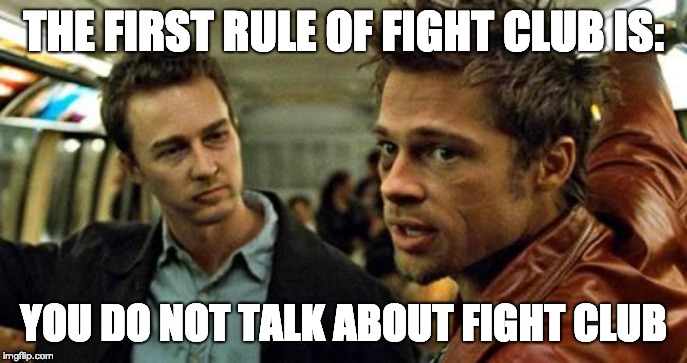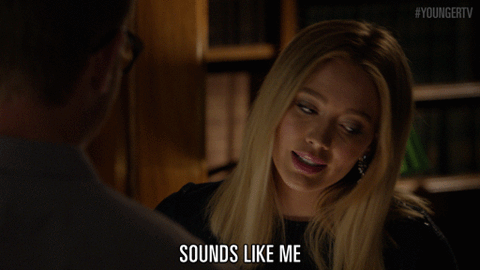Author’s Note: I wrote this article back in 2019, then updated it in July of 2023 to reflect how I’ve refined my process over time. If you’d like to speak with me about doing a project together, you can get in touch here. Whether you’re looking to hire a ghostwriter or be a ghostwriter yourself, I hope you find the description of the process helpful.
I’ve ghostwritten for some of the biggest names in the marketing space. I’ve also ghostwritten for dozens of founders, executives, and subject matter experts — most from software and technology companies.
My articles have been published on Moz, Inc, Kissmetrics, Business Insider, and dozens of other well-known sites — plus many niche-specific publications you’ve almost certainly never heard of.
No, I’m not going to show you examples of this kind of work.
A good ghostwriter never kisses and tells. 🙂

Note: Want me to be your ghostwriter? Get in touch.
The Not-So-Mysterious World of Ghostwriting
Being a ghostwriter feels a bit like being a member of a secret society.
“The first rule of ghostwriting is: You do not talk about ghostwriting!”

I absolutely love ghostwriting, to be honest. Among the many types of work I do for clients (including my ever-popular hero case studies), ghostwriting gigs are among my favorite assignments.
The reason is simple: I love working with really smart people to create really great content.
At its core, that’s all ghostwriting is: two professionals working together to create something valuable to share with the world.
In this article, I’m going to expose the “secrets” behind ghostwriting at this level.
As you’ll see, it’s not nearly as mysterious as it sounds.
What I Mean When I Say “Ghostwriting”

Sometimes people say the word “ghostwriting” and think it means something very different than the process I use with my clients.
Unfortunately, there’s a widely used practice where a company hires a writer, gives them a topic or a keyword, then expects the writer to write a “thought-leadership” article — on their own.
The writer (who’s obviously not an expert in the topic) searches around on Google for an hour or so, then rewrites a few of the articles that already exist on the topic.
The client adds their name to the byline, then publishes it.
That?
That’s not ghostwriting.
That’s just dumpster diving with your client’s name slapped on the article at the end.

(If you don’t know the term dumpster diving, read this).
I’ve never seen an article written this way turn into anything the writer or the client is really all that proud of.
More importantly, from what I’ve seen in 15 years as a content marketer, the dumpster diving process — despite its popularity — is woefully ineffective.
The whole point of thought leadership is to create a reputation as an expert.
To do that, your content must, MUST be based on your personal experiences and expertise. Because that’s what people respond to.
Think of it this way:
If you were asked to present at a conference next week, you might work with a writer to prepare your presentation.
But you’d work with the writer. You wouldn’t just hand them a topic and expect them to come up with a great presentation completely on their own.
You’d meet with the writer, talk about the stories you have that you could use, and go over the outline.
If you’re like most of the executives I’ve worked with, you’d have multiple meetings leading up to the conference — because you know, this is your chance to build your reputation in the eyes of the audience.
The irony?
Unless you get a keynote spot at a major presentation, most conference talks attract a few hundred people, at best.
Sometimes just a few dozen.
Content we write and publish on the web?
I have ghostwritten articles that have been seen by over a million people at this point.
Even the article you’re reading right now — which lives on a tiny website with almost no domain authority — has been seen by 768 people since I published it, with an average time-on-page of over five minutes.
Don’t get me wrong; I love doing conference talks too. And I work hard to make my conference presentations exceptional.
But what I’m telling you is this:
If you want to build your reputation as an expert in your field, online content pieces (blogs, videos, etc.) have the potential of doing far more for you than almost any conference talk.
That’s especially true if you publish your content on a regular cadence.
How Ghostwriting Works
Let’s talk about how I do ghostwriting — and why it’s so much more fun than just sticking your name on someone else’s Google research paper.
1. It’s a Collaboration
The first thing to know is that ghostwriting is a collaboration.
You bring the expertise and experience. I bring the storytelling and writing skills. Together, we make something amazing.

I use an interview process to make this happen — usually a 45-minute conversation.
I can usually get one or two blog articles from a call of that length. Any shorter than that and I have to rush to get details. Any more and I notice that we both start to get tired.
Lately, I’ve started to produce video shorts to go with the written content we produce. Either way, the core of the process is a conversion between you and me.
I prepare a few questions in advance, but not that many. The gold is always, always in the follow-up questions.
I consistently get the most amazing insights simply by saying: “That’s interesting… Tell me more about that.”
As we chat, I’ll be listening for something unique, some insight the market doesn’t know or understand yet. Once I hear it, I dig in for more details.
This is both harder and easier than it sounds.
As an expert in your field, you’re absolutely full of these kinds of insights. You may not realize it though, so it’s my job to get you talking.
Often, you don’t even realize how deep and nuanced your views really are. It takes a conversation with an experienced interviewer (like me) to bring those gems to the surface.
2. It’s Ethical (Because You Truly Are the Author)
Sometimes people ask me if ghostwriting is ethical.

Answer: Yes!
When done as a collaboration, you truly are the author of the material we publish.
The stories, insights, and experience are all yours. You worked closely with me to create the material. And if someone asked you to answer a follow-up question on the topic, you’d be able to engage with them in conversation.
Importantly, the content also sounds like it’s written by you (and not like me) — a skill most writers have never taken the time to learn.
My goal with this is to create congruency in your personal brand.
If people hear you speak, they’ll hear your voice and personality coming through. Likewise, when they read the content we produce together, they’ll feel your voice and personality as they read.
This is in stark contrast to the dumpster diving process I mentioned earlier — which — even if you slap your name on the article — doesn’t sound like you had anything to do with it.
Because you didn’t.
Whether you realize it or not, your readers will. This is yet another reason I don’t recommend the dumpster diving process for content writing.
3. I Use a Series of Writing Techniques to Write in Your Voice — Instead of Mine
How do I write in your voice?
Well… I can’t tell you all my secrets. But I have a series of exercises and practices I use to internalize your personality before I write.
You know how great actors become the characters they play on camera?
You know it’s Heath Ledger. But all you can see is the Joker. He was that good at becoming the character.

Over the years, I’ve developed a series of techniques that aren’t that different than what actors do in front of the camera.
Method acting, in particular, is an art I studied extensively to develop my ghostwriting process.
I also manually transcribe of all our conversations at first, listening to you talk in a relaxed context, noticing your speech habits, listening for repeated phrases, and getting a feel for your overall personality.
My goal is to internalize your voice to the point I can pull it out and use it whenever we work together.

It’s not perfect of course.
The end result is always a blend between your voice and my voice.
But I work as hard as I can to make the content sound as much like you as possible.
The result?
Unless you tell people, no one will ever know you used a ghostwriter to help you with your content.
Once I get to know you, I’m usually able to write in your voice on demand — almost like an impressionist — and that makes the whole process go much faster.
Who Hires Ghost Writers?
There are two groups of people who hire me to do projects with them:
1. Busy People (Usually Founders or Executives)
The first group I often work with are people who could do all of this themselves. But they’re crazy busy and don’t have the time.

They do, however, have enough time to do a few interviews with me and then review the drafts I create.
A few hours spread across a month is usually all it takes.
2. Smart People Who Aren’t Good Writers
The second group of clients I work with are people who are extremely knowledgeable — but they’re not skilled at writing or communicating for non-expert audiences.

Often these are engineers, software developers, process or change management experts, or other kinds of subject matter experts.
These people are sometimes the best in the world at what they do.
They want the content they create to be of equal quality, which is why they work with someone like me.
3 Ninja Questions to Ask a Ghostwriter Before Hiring Them
Thinking of working with a ghostwriter?
Here are three questions that I recommend asking them to determine if the writer really is an expert-level ghostwriter.
1. How do you create content that sounds like it’s written like me, not you?

You will find that most writers don’t have an answer to this question.
If they have any kind of detailed, repeatable process for capturing your voice, however, that’s a great sign.
2. Do you share ghostwriting samples in your public portfolio?

The only correct answer is: “No.”
3. What’s your process for edits and revisions?

Because ghostwriting is a collaboration, there are always a round or two of edits.
Most of the time, this is because you’ll read the draft, realize you didn’t say something you wanted to say, and want to add it in.
This is a normal part of the creative process.
The writer should be very comfortable taking your feedback and working it into the final draft of the content. And they should tell you as much when you ask them this question.
Some writers will say, “I allow for one round of edits before an extra fee” or something like that.
I’ve never been a fan of that model. My approach is: “I’m in it until you’re happy with it.”
It’s ghostwriting, after all. The whole point is to publish content you’re thrilled with.
What Does It Cost to Work With a Ghostwriter?
To give you some additional context…
I met a writer not long ago who ghostwrites full-length business books.
His projects are very different than mine — lasting six to 12 months for production and sometimes another year to get through editing.
I asked him what he charged, and he told me: “I don’t pick up my pen for less than $50,000.”
Now, my rates are nowhere near those kinds of numbers. But they do give you an idea of what top writers make doing this kind of work.
My articles tend to be 1,000 to 2,000 words. They’re long pieces for blog posts or articles. But they’re not books.
When I quote a rate, it’s an “all-in” rate, meaning it includes everything — interviews, transcription, background research, writing, editing, proofreading, communication, graphics, unlimited revisions, and anything else we need to make the project awesome.
For ghostwriting of longer-form articles specifically (the most common thing I do for clients), I start at $1,000 per piece with a 1-2 week production schedule.
If we’re doing shorter-form content or videos (usually for social media or to embed in the articles themselves) we’ll use some version of the above process. And the rate just depends on the volume and publishing schedule.
Most of my ghostwriting clients hire me to do one or two projects a month, sometimes in addition to other work we’re doing for other areas of their business (e.g., case studies, feature stories, data research content, etc.).
I also offer monthly retainer agreements if you’d like to do this kind of work on a regular schedule.
My ask for a monthly agreement is that you let me know what “success” looks like for this content and commit to at least three months so we can get a feel for what’s working.
What Did I Miss?
Are you a ghostwriter who uses a different approach than the ones I listed here? Or have you worked with a ghostwriter that did something awesome?
Let me hear about it in the comments!
I don’t claim to know everything, and I’d love to learn what’s working for you.
Next Steps
Like this article?
Want awesome content and/or more leads from your B2B content marketing efforts?
Here are some next steps you can take:
- Hire me for writing (including ghostwriting!) or strategy consulting
- Join my Facebook group for content marketers (8,000+ members and counting!)
Final Thoughts
My favorite thing about being a content marketer is the conversations sparked by the content we produce.
Whether or not you join the Facebook group, I hope you found this article helpful!
If you have questions about this topic or anything content marketing related, drop a comment below. I’d love to hear from you, and I’ll respond to your comment as soon as I can.
Or, as always, you can ping me on Facebook or LinkedIn. I’m active on both platforms and would love to connect.
Thanks for reading!


This is so, so good. Everything you said here enlightened me. I’m letting my team read this. Thanks!
Great content. Thanks for sharing the difference between ghost-writing and dumpster-diving 🙂